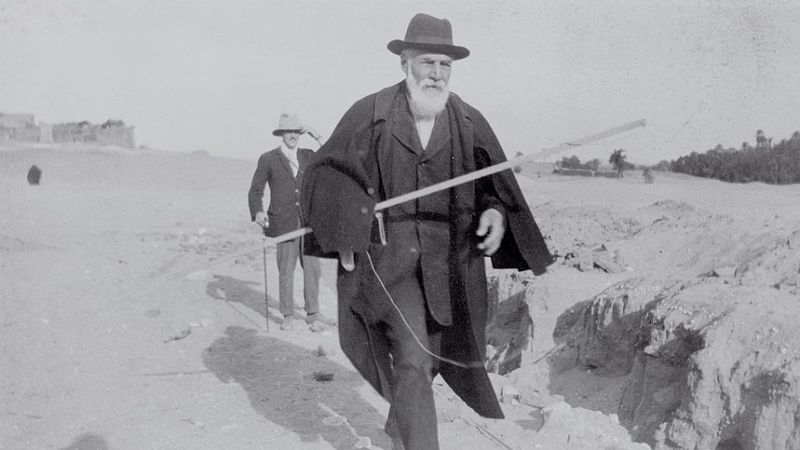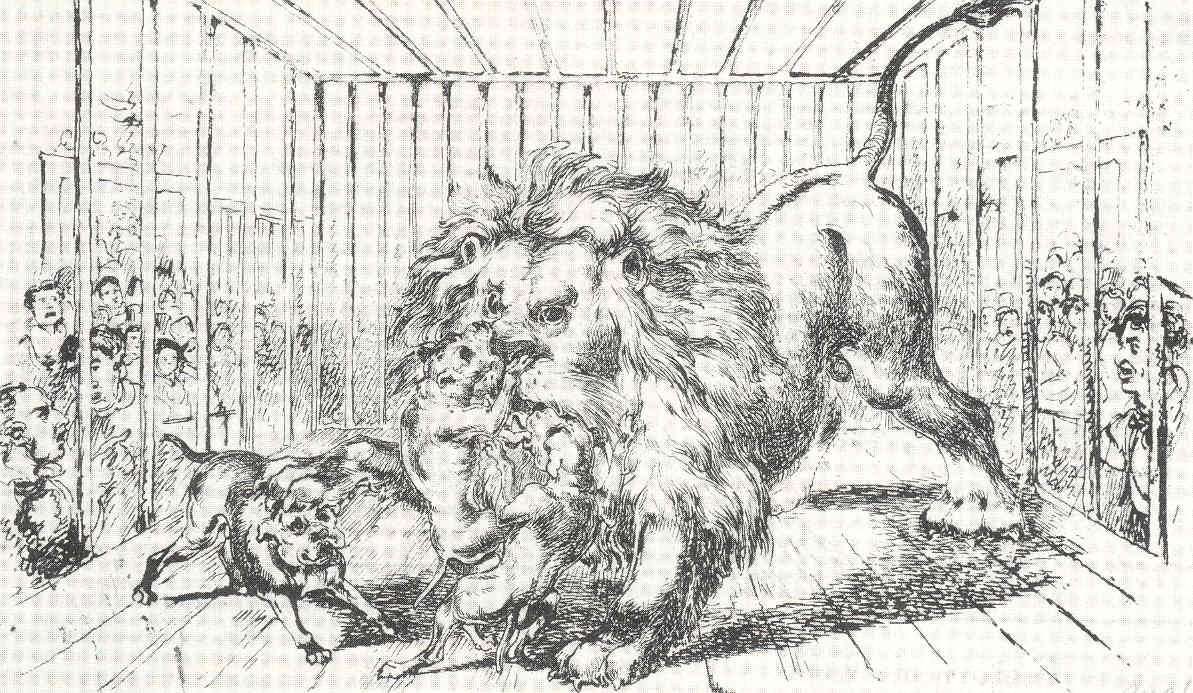In 2018, “GeoWizard” Tom Davies set out to cross the width of Wales, 33 miles, in a straight line. Part 1 is above, and the rest followed in four parts (2, 3, 4, 5).
It looks incredibly difficult.
(Via MetaFilter.)
In 2018, “GeoWizard” Tom Davies set out to cross the width of Wales, 33 miles, in a straight line. Part 1 is above, and the rest followed in four parts (2, 3, 4, 5).
It looks incredibly difficult.
(Via MetaFilter.)
Michael Snow’s 1967 experimental film Wavelength consists essentially of an extraordinarily slow 45-minute zoom on a photograph on the wall of a room. William C. Wees of McGill University points out that this raises a philosophical question: What visual event does this zoom create? In a tracking shot, the camera moves physically forward, and its viewpoint changes as a person’s would as she advanced toward the photo. In Wavelength (or any zoom) the camera doesn’t move, and yet something is taking place, something with no analogue in ordinary experience.
“If I actually walk toward a photograph pinned on a wall, I find that the photograph does, indeed, get larger in my visual field, and that things around it slip out of view at the peripheries of my vision. The zoom produces equivalent effects, hence the tendency to describe it as ‘moving forward.’ But I am really imitating a tracking shot, not a zoom. … I think it is safe to say that no perceptual experience in the every-day world can prepare us for the kind of vision produced by the zoom.”
“What, in a word, happens during a viewing of that forty-five minute zoom? And what does it mean?”
(From Nick Hall, The Zoom: Drama at the Touch of a Lever, 2018.)

William Matthew Flinders Petrie, the famous English Egyptologist, unearthed not many years ago at Kahun a will which was forty-five hundred years old. There seems no reason to question either the authenticity or antiquity of the document. The will therefore antedates all other known written wills by nearly two thousand years. That excellent authority, the Irish Law Times, speaks of the will so entertainingly that its comments are here reproduced:
‘The document is so curiously modern in form that it might almost be granted probate today. But, in any case, it may be assumed that it marks one of the earliest epochs of legal history, and curiously illustrates the continuity of legal methods. The value, socially, legally and historically, of a will that dates back to patriarchal times is evident.
‘It consists of a settlement made by one Sekhenren in the year 44, second month of Pert, day 19 — that is, it is estimated, the 44th of Amenemhat III, or 2550 B. C. — in favor of his brother, a priest of Osiris, of all his property and goods; and of another document, which bears date from the time of Amenemhat IV, or 2548 B. C. This latter instrument is, in form, nothing more nor less than a will, by which, in phraseology that might well be used today, the testator settles upon his wife, Teta, all the property given him by his brother, for life, but forbids in categorical terms to pull down the houses “which my brother built for me,” although it empowers her to give them to any of her children that she pleases. A “lieutenant” Siou is to act as guardian of the infant children.
‘This remarkable instrument is Witnessed by two scribes, with an attestation clause that might almost have been drafted yesterday. The papyrus is a valuable contribution to the study of ancient law, and shows, with a graphic realism, what a pitch of civilization the ancient Egyptians had reached — at least from a lawyer’s point of view. It has hitherto been believed that, in the infancy of the human race, wills were practically unknown.’
— Ohio Law Reporter, Nov. 13, 1911
Bonus Flinders Petrie oddity:
Mr. Flinders Petrie, a contributor of interesting experiments on kindred subjects to Nature, informs me that he habitually works out sums by aid of an imaginary sliding rule, which he sets in the desired way and reads off mentally.
He does not usually visualise the whole rule, but only that part of it with which he is at the moment concerned.
I think this is one of the most striking cases of accurate visualising power it is possible to imagine.
— Francis Galton, Inquiries into Human Faculty and Its Development, 1883
Suppose that on some occasion the chiming of a bell (that is, its ringing) shattered a glass located half a mile from the bell. There was an event that was the bell’s chiming and one that was the glass’s shattering; and their locations are straightforward. But what of the location of the bell’s shattering of the glass?
— Lawrence Brian Lombard, Events: A Metaphysical Study, 2019

In the late 1950s the U.S. government built a bunker under the Greenbrier resort in White Sulphur Springs, W.Va., to “permit the continuation of the American form of constitutional government in the event of nuclear war.” The underground facility could house 535 members of Congress and 565 staff members, with separate chambers for the House and Senate and a hall large enough to hold joint sessions.
No one involved in the construction was told what they were building, but it was clear enough. Randy Wickline, who hauled 50,000 tons of concrete to the site, saw walls two feet thick and a concrete roof buried under 20 feet of soil. “Nobody came out and said it was a bomb shelter,” he told Washington Post reporter Ted Gup, “but you could pretty well look and see the way they was setting it up there that they wasn’t building it to keep the rain off of them.” (Another contractor, who’d been asked to build an “exhibit hall,” said, “We’ve got 110 urinals we just installed. What in the hell are you going to exhibit?”)
In the end members of Congress themselves expressed reservations. House Speaker “Tip” O’Neill said, “Jesus, you don’t think I’m going to run away and leave my wife? That’s the craziest thing I ever heard of.” Shortly after Gup’s story appeared in 1992, the facility was closed.
(From Kenneth D. Rose, One Nation Underground: The Fallout Shelter in American Culture, 2001.)
A notable detail from Alexander Morrison Stewart’s Camp, March and Battle-Field (1865): During the Battle of Malvern Hill, a terrified rabbit darted about the battlefield looking for safety until it came upon a Union regiment lying prone:
Ere the rabbit seemed aware, it had jumped into the midst of these men. It could go no farther, but presently nestled down beside a soldier, and tried to hide itself under his arm. As the man spread the skirt of his coat over the trembling fugitive, in order to insure it of all the protection in his power to bestow, he no doubt feelingly remembered how much himself then needed some higher protection, under the shadow of whose arm might be hidden his own defenceless head, from the fast-multiplying missiles of death, scattered in all directions.
It was not long, however, before the regiment was ordered up and forward. From the protection and safety granted, the timid creature had evidently acquired confidence in man — as the boys are wont to say, ‘Had been tamed.’ As the regiment moved forward to the front of the battle, it hopped along, tame, seemingly, as a kitten, close at the feet of the soldier who had bestowed the needed protection. Wherever the regiment afterwards went, during all the remaining part of that bloody day and terrible battle, the rabbit kept close beside its new friend.
“When night came on, and the rage of battle had ceased, it finally, unmolested and quietly, hopped away, in order to find some one of its old and familiar haunts.”

We often think of consciousness as fundamentally involving self-awareness. A conscious decision is one I’m aware of making; a conscious memory is one I’m aware of having. It would seem that most complex behaviors require this state. But philosopher David Malet Armstrong points out:
If you have driven for a very long distance without a break, you may have had experience of a curious state of automatism, which can occur in these conditions. One can suddenly ‘come to’ and realize that one has driven for long distances without being aware of what one was doing, or, indeed, without being aware of anything. One has kept the car on the road, used the brake and the clutch perhaps, yet all without any awareness of what one was doing.
What’s going on here? “The driver in a state of automatism perceives, or is aware of, the road. If he did not, the car would be in a ditch. But he is not currently aware of his awareness of the road. He perceives the road, but he does not perceive his perceiving, or anything else that is going on in his mind.” He is driving, it would seem, without conscious awareness of what he’s doing; we seem to be able to perform complex mental processes without conscious experience.
(From D.M. Armstrong, The Nature of Mind, 1981.)

In 1825, impresario George Wombwell sponsored a fight between six bulldogs and a lion from his menagerie in the English market town of Warwick. Five hundred people assembled in a disused factory yard, and Wombwell arranged for the dogs to attack Nero three at a time, ignoring the pleas of a Quaker named Samuel Hoare, who asked “how thou wilt feel to see the noble animal thou hast so long protected, and which has been in part the means of supplying thee with the means of life, mangled and bleeding before thee?” The lion seemed indisposed to use its full strength against the first three dogs, swatting them away with his paws but never biting. After a 20-minute respite, Wombwell set the next three dogs upon him, and they pinned him to the floor. When a third round brought the same result, Wombwell conceded defeat for the lion, afraid that “the death of the animal must be the consequence of further punishment.”
In a second contest less than a week later, though, a Scottish-born lion known as Wallace fought back ferociously, holding one dog in his teeth and “deliberately walk[ing] around the stage with him as a cat would a mouse.” A second dog “died just a few seconds after he was taken out of the cage,” and a third remained in Wallace’s jaws until a keeper “threw a piece of raw flesh into the den.” A fourth was left in critical condition with “several of his ribs broken.”
The spectacle was widely condemned in the press and informed a new sensitivity regarding cruelty to animals. In 1838 one commentator remarked, “what dogs and lions can achieve in the arena of combat … having now been ascertained, let us hope that no closer approximation to the sanguinary games of the Roman amphitheatre may ever be attempted in Great Britain, nor her soil again polluted by a repetition of such spectacles.”
(Helen Cowie, “A Disgusting Exhibition of Brutality,” in Sarah Cockram and Andrew Wells, eds., Interspecies Interactions, 2018.)

A man decides to walk one mile from A to B. A god waits in readiness to throw up a wall blocking the man’s further advance when the man has travelled 1/2 mile. A second god (unknown to the first) waits in readiness to throw up a wall of his own blocking the man’s further advance when the man has travelled 1/4 mile. A third god … &c. ad infinitum. It is clear that this infinite sequence of mere intentions (assuming the contrary-to-fact conditional that each god would succeed in executing his intention if given the opportunity) logically entails the consequence that the man will be arrested at point A; he will not be able to pass beyond it, even though not a single wall will in fact be thrown down in his path. The before-effect here will be described by the man as a strange field of force blocking his passage forward.
— Jose Benardete, Infinity: An Essay in Metaphysics, 1964
Back in 2005 I mentioned that Baldwin Street, in Dunedin, New Zealand, was the steepest street in the world.
Last month it was surpassed: Guinness World Records certified that Ffordd Pen Llech, in the Welsh seaside town of Harlech, has a gradient of 37.45%, more than 2 percentage points steeper.
Businessman and architectural historian Gwyn Headley told the Associated Press he felt “jubilation” at the news. He said he feels sorry for New Zealand, but “steeper is steeper.”